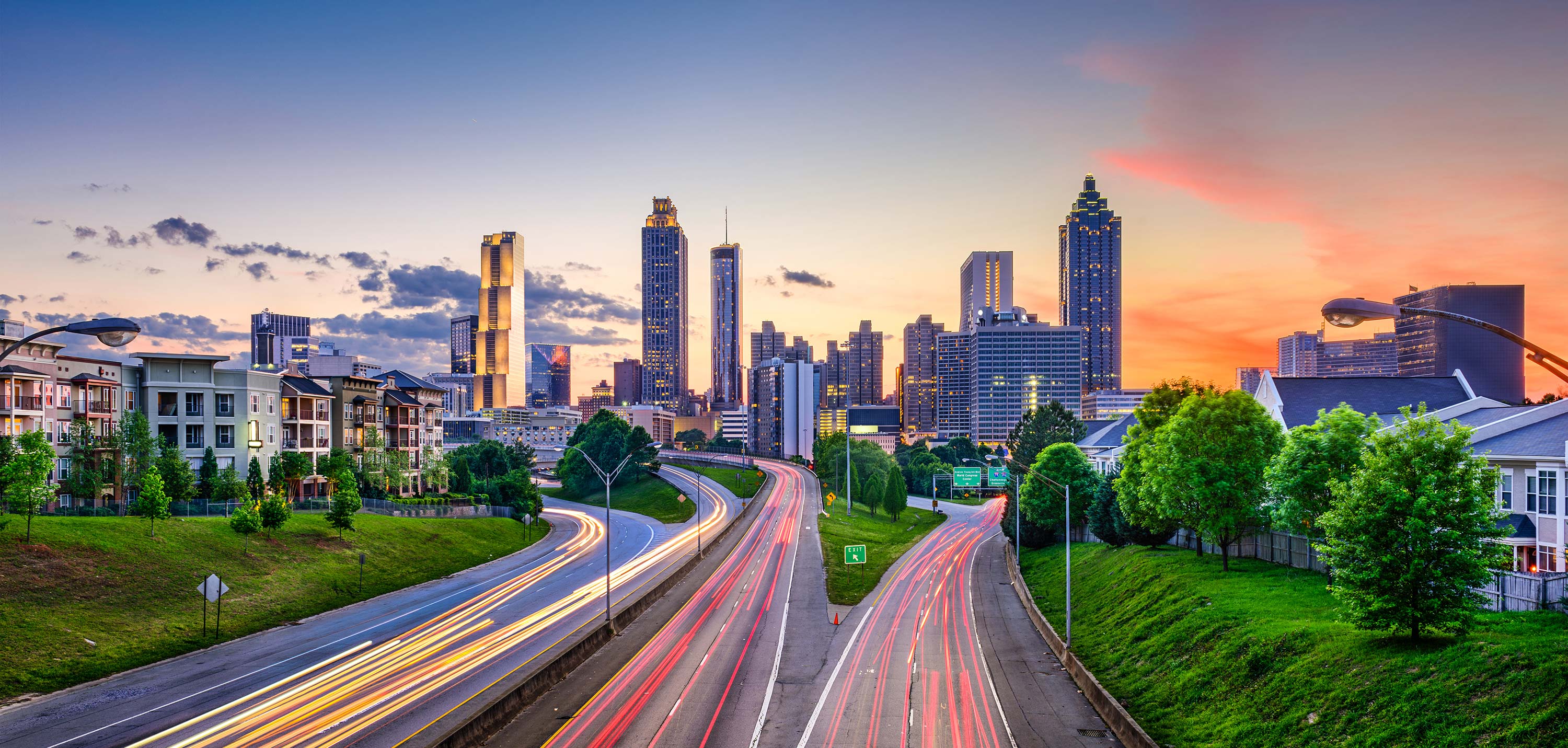When Atlanta adopted the phoenix as the city’s mythological emblem, signifying its resurgence from Sherman’s incendiary Civil War march, the city’s early founders were not aware how fitting this symbol of rebirth would become for Georgia’s capital. Returning to my birthplace after a multiyear hiatus in college, I marveled at developments like the BeltLine and Krog Street Market. A friend informed me of a new commercial forum called East Atlanta Village that was just minutes from my Decatur hometown, and I had never heard of it. A few years away from the city insulated me from vast changes redefining Atlanta’s configuration. With its population projected to double by 2040, Atlanta is rushing to keep pace with a growing populace desperate to partake in everything the city has to offer. In response, commercial developments are transforming the culture within Atlanta, leaving residents wondering what new phoenix is rising in the city.
Ponce City Market, a multiuse marketplace on historic Ponce de Leon Avenue, nurtures an ecosystem filled with everything from local fashion to emporiums selling homegrown flowers––supporting the sale of southern fare and retail just steps from the BeltLine. Emi Muto, a Georgia State student employed at Ponce City Market’s boutique Abbey Glass, notes that “Ponce City Market’s second floor is all local designers and business owners. I’ve seen local breweries open up and local artists who host events here, which promotes the aspect of culture.” Consumers can fill a beer growler with hometown brews like Orpheus at Tap on Ponce, or grab a Popsicle from Atlanta’s iconic King of Pops. Similar to Ponce City Market, Krog Street Market is an urban market that inhabits Atlanta’s historic Stove Works and supports a culinary epicenter true to the city. In Krog Street, local confection shop Xocolatl churns out chocolates oozing ganache while Georgia’s own Grand Champion BBQ smokes brisket daily. New commercial developments like Ponce City Market and Krog Street, upon close inspection, foster local businesses latticed with just about everything Atlanta.
“Ponce City Market’s second floor isall local designers and business owners. I’ve seen local breweries open up and local artists who host events here, which promotes the aspect of culture.”
Developments like Krog Street and Ponce City Market have enabled cultural progression and economic stimulation, yet the underbelly of these urban revitalizations is the gentrification of nearby communities. Krog Street Market sits just blocks from Old Fourth Ward––the former home and neighborhood of Civil Rights Movement leader Martin Luther King Jr. Developments around Krog Street Market have displaced low-income residents that have called this historic Atlanta neighborhood home for decades. Median home values in parts of Old Fourth Ward have increased by 119 percent since 2000, and Atlanta had the nation’s 5th fastest gentrification rate four years ago.
The Atlanta BeltLine, a planned 22-mile pathway that connects 45 Atlanta neighborhoods, has faced similar issues: the vast majority of economic and cultural development around the BeltLine has been around northeast Atlanta, which houses mostly upper middle-class Atlantans. Initially, the Atlanta BeltLine Partnership (ABP) promised to combat gentrification associated with the BeltLine by allocating 5,600 affordable housing units for communities surrounding the pathway. Notwithstanding this guarantee, APB reneged and altered their promise––they would build only 200 affordable units, perhaps even less. In response, BeltLine founder Ryan Gravel resigned from ABP because of the organization’s disregard for ensuring affordable housing for historic Atlanta neighborhoods lining the BeltLine’s perimeter.

Atlanta’s cultural capital extends far beyond pathways and markets. A decade ago, the only intrastate-filmed movies Georgians could name were Deliverance and Forrest Gump, but a 2008 tax incentive discounted film production inside Georgia by 30 percent and attracted America’s film industry to Atlanta. Georgia State student and freelance production assistant John Robertson emphasizes that the tax incentive “fundamentally changed how film was done in Atlanta. People from Los Angeles and New York are coming here to shoot. The market has gotten so much bigger.” For confirmation, you could ask my parents’ new West Coast neighbors who left Los Angeles to settle in Decatur after learning that film production in Georgia outpaced that in California last year. The meteoric trajectory of Atlanta’s film industry adds another panel to the cultural kaleidoscope of the city as it steals limelight from Hollywood with hits like Atlanta-filmed blockbuster Baby Driver and award-winning FX series Atlanta.

For many, culture can be elusive in Atlanta, but Emi Muto is forging connections between Atlanta’s culture and interested citizens. Whether it be art exhibitions or local concerts, hip-hop shows or poetry performances, it can be found using EM––Muto’s startup website that highlights dozens of artists and festivals and performances across the Dogwood City. “I have friends trying to get their work out, whether they’re musicians or painters or writers or sculptors,” says Muto. “I wanted to create a platform for these people to share their stories.” EM’s easily navigable interface enables netizens to constantly stay au courant with Atlanta’s vast cultural offerings.
Culture is delicate. With such dramatic transformations––from the BeltLine to Ponce City Market to a flourishing film industry––reshaping Atlanta’s urban patchwork and cultural foundations, residents are watching as their city contours into a newly-shaped metropolis. Some fear Atlanta will be whitewashed by business developments that sap the city’s cultural identity in blind pursuit of capital gains. After observing Ponce City and Krog Street Market’s thriving locally-owned and operated businesses, innovators such as Muto enabling cultural growth through EM, and a film industry forming a sturdy connection to the city, the culture within many of Atlanta’s boroughs have been altogether amplified.
However, progress should not come at the expense of other residents, as seen with the Atlanta BeltLine. Completing construction of the portions of the BeltLine that mostly benefit high income, majority white Atlantans and shortchanging lower income, predominantly African American populations in west and south Atlanta is a flawed archetype for renovating the city’s cultural identity. As Atlanta continues its trajectory as an exponentially growing terminus, the city must be conscientious of the aggregate impacts that commercial and cultural developments have on all Atlantans.
